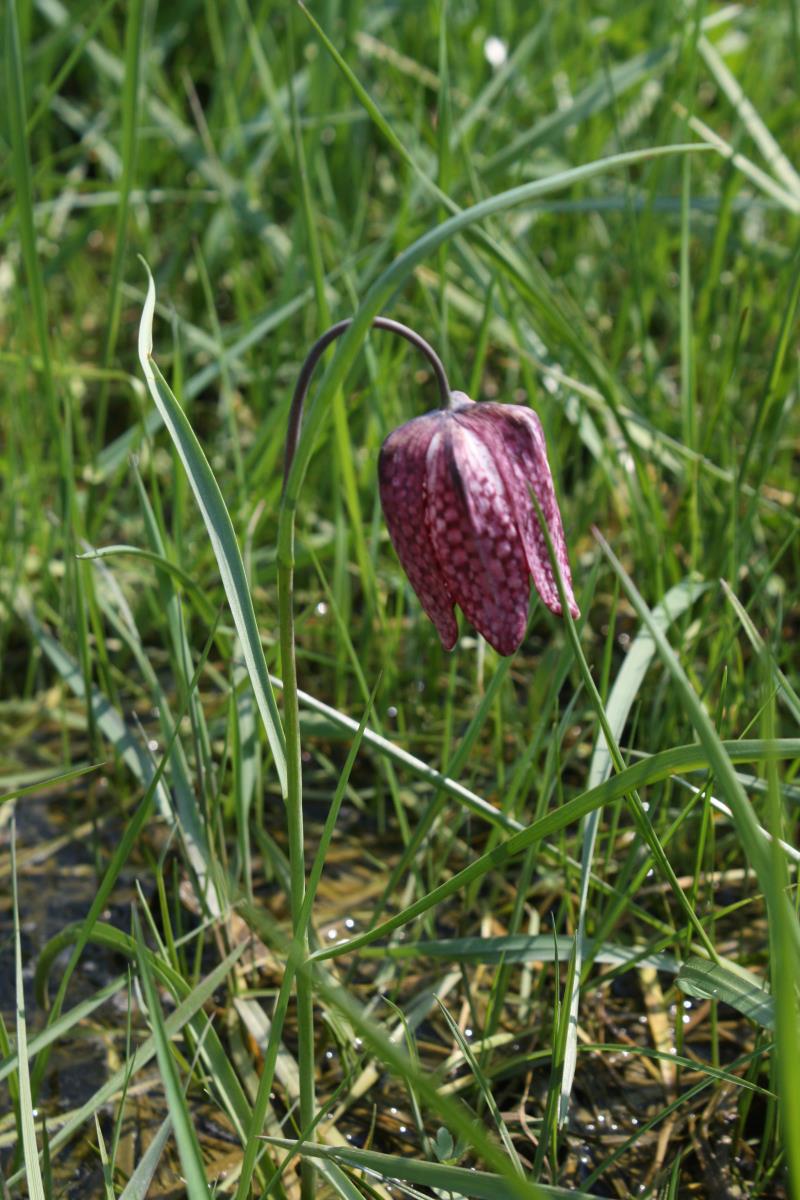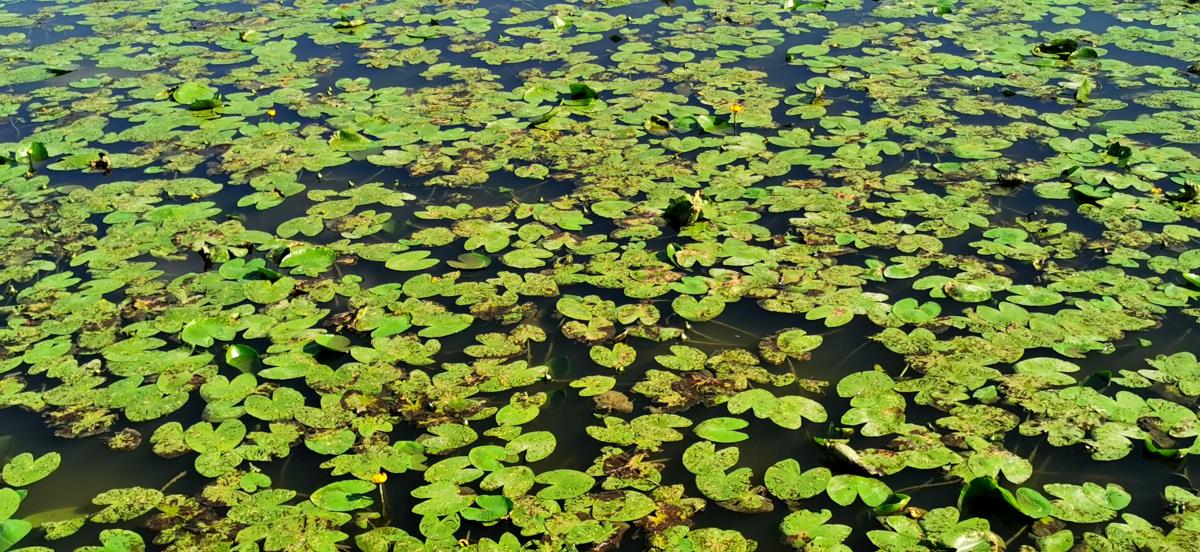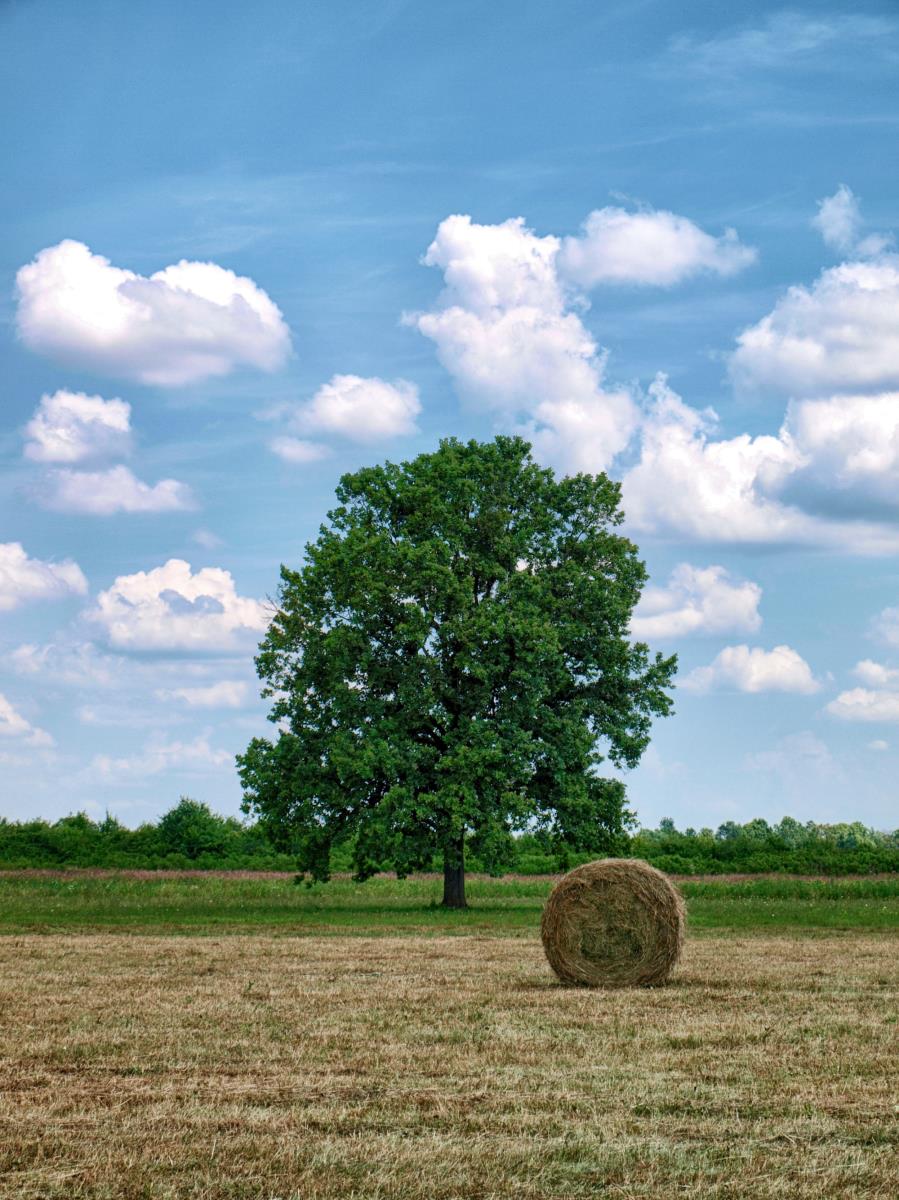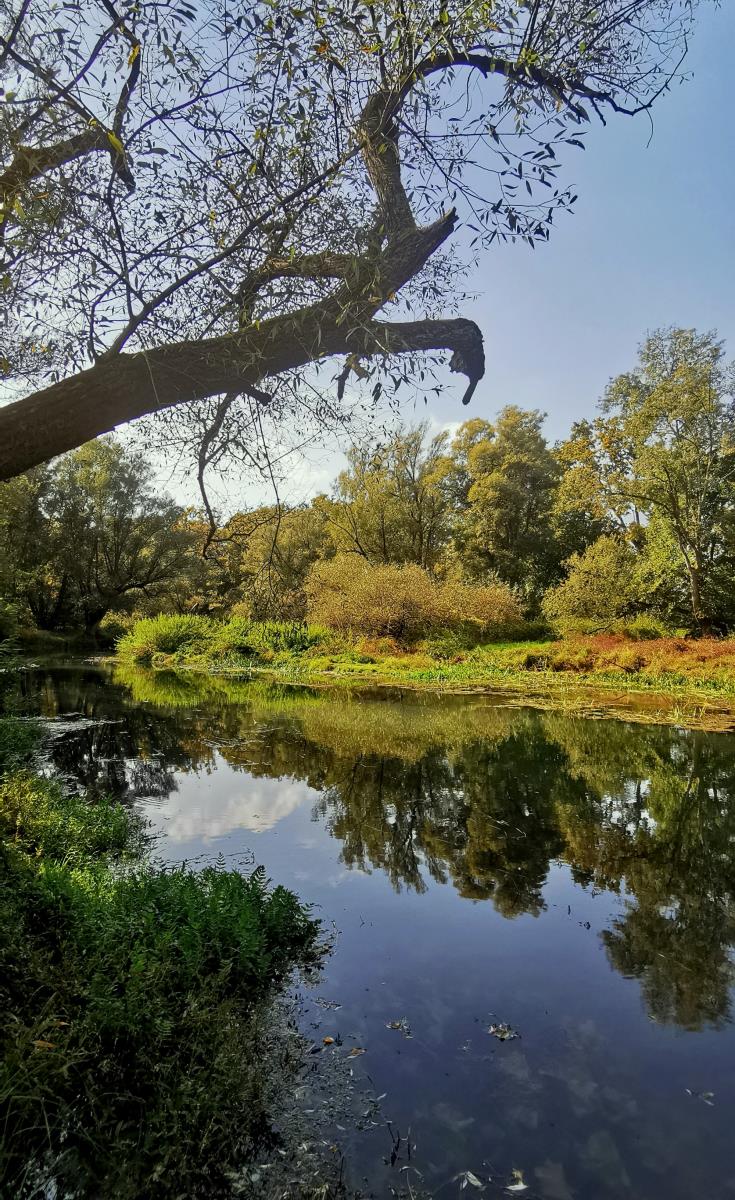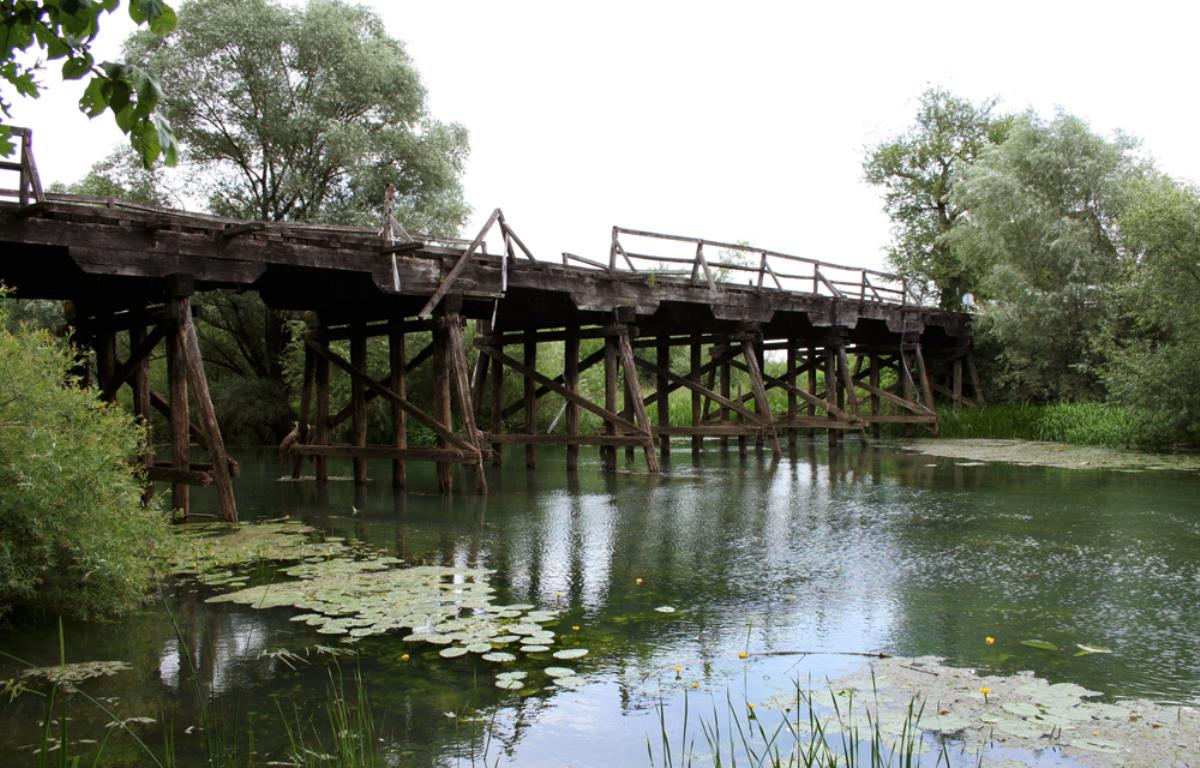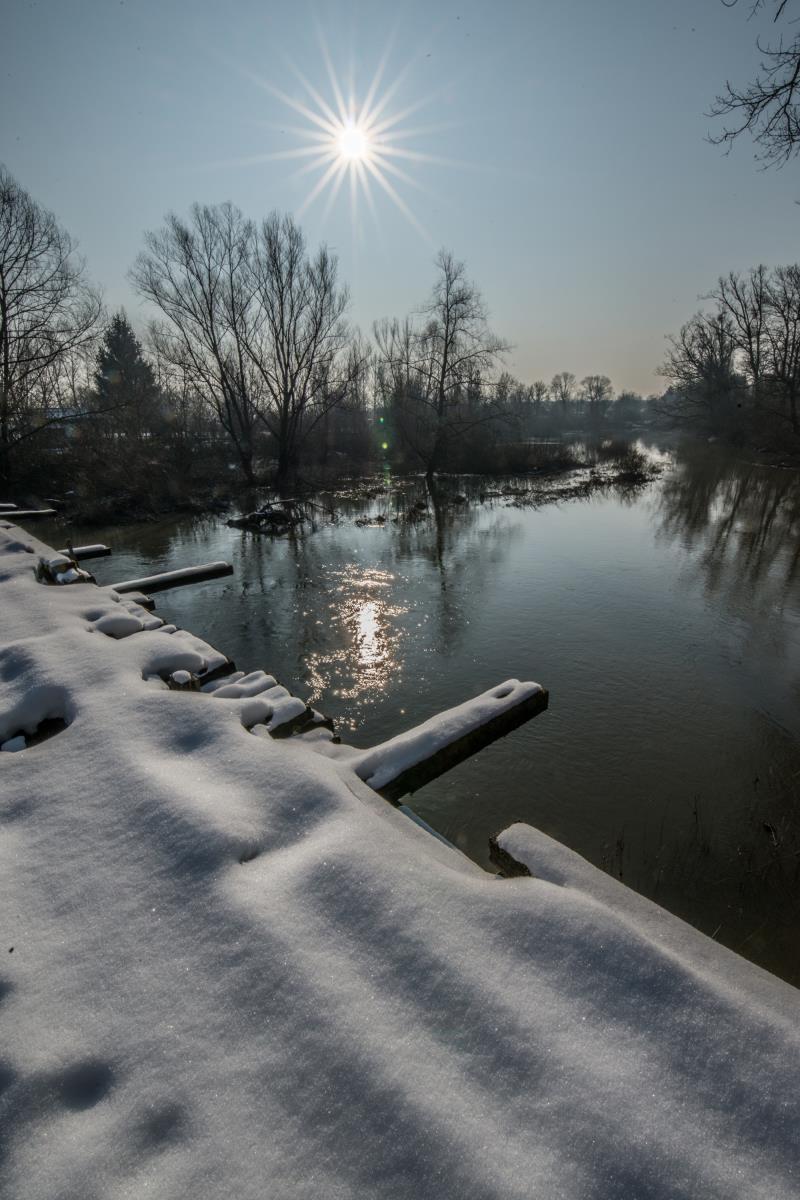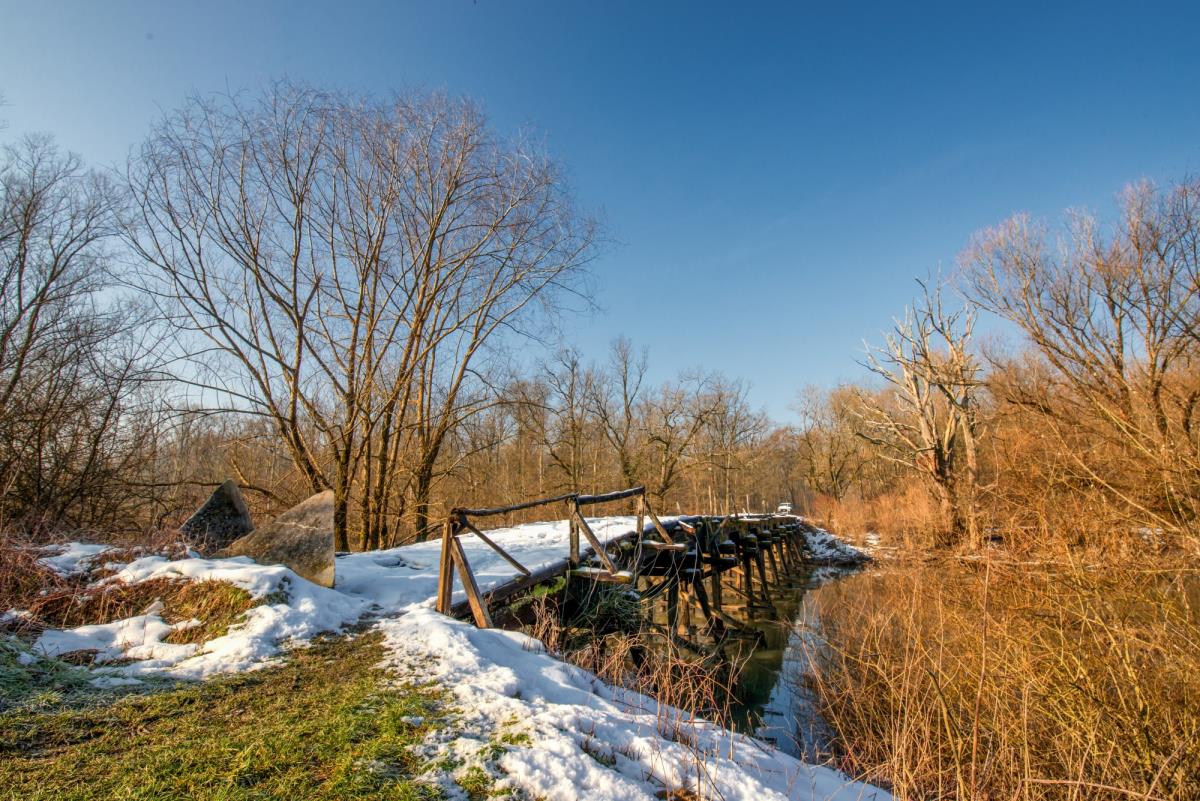TUROPOLJSKI LUG (TUROPOLJE GROVE) SIGNIFICANT LANDSCAPE
Category of protection: Significant landscape
Year of protection: 2003
Location
Significant landscape Turopoljski lug and wet meadows along the river Odra are located in Croatia, on the border of Zagreb and Sisak-Moslavina Counties.
History
Turopoljski lug and wet meadows along the river Odra have been protected since 2003 as a significant landscape and cover the area of 3.403,56 ha.
The area of Turopoljski lug is included in the Natura 2000 ecological network under the names Turopoljski lug (HR1000003) and Odransko polje (HR2000415) and covers the area of 137,36 km². The target of conservation efforts are 17 bird species, reptiles and amphibians: the European fire-bellied toad (Bombina bombina), the yellow-bellied toad (Bombina variegata), the European pond turtle (Emys orbicularis), the Italian crested newt (Triturus carnifex) and the Danube crested newt (Triturus dobrogicus),the mammals, such as the bat: the barbastelle bat (Barbastella barbastellus), Geoffroy's bat (Myotis emarginatus) and the greater horseshoe bat (Rhinolophus ferrumequinum), along with the Eurasian beaver (Castor fiber) and the Eurasian otter (Lutra lutra). The butterflies: the large copper (Lycena dispar) and the marsh fritillary (Euphydryas aurinia), the beetles: the great capricorn beetle (Cerambyx cerdo), the European stag beetle (Lucanus cervus) and the water beetle (Graphoderus bilineatus), and a plant species the European water clover (Marsilea quadrifolia).
The area of Turopoljski lug is included in the Natura 2000 ecological network under the names Turopoljski lug (HR1000003) and Odransko polje (HR2000415) and covers the area of 137,36 km². The target of conservation efforts are 17 bird species, reptiles and amphibians: the European fire-bellied toad (Bombina bombina), the yellow-bellied toad (Bombina variegata), the European pond turtle (Emys orbicularis), the Italian crested newt (Triturus carnifex) and the Danube crested newt (Triturus dobrogicus),the mammals, such as the bat: the barbastelle bat (Barbastella barbastellus), Geoffroy's bat (Myotis emarginatus) and the greater horseshoe bat (Rhinolophus ferrumequinum), along with the Eurasian beaver (Castor fiber) and the Eurasian otter (Lutra lutra). The butterflies: the large copper (Lycena dispar) and the marsh fritillary (Euphydryas aurinia), the beetles: the great capricorn beetle (Cerambyx cerdo), the European stag beetle (Lucanus cervus) and the water beetle (Graphoderus bilineatus), and a plant species the European water clover (Marsilea quadrifolia).
Tourism
The area of Turopolje and the Odra lowland is characterized by a high level of conservation of cultural heritage evident in numerous edifices constructed in traditional wooden style of architecture – residential buildings, farm buildings and sacral architecture in the settlements throughout the area. A deep connection between man and his environment is also visible in the cultural landscape which is a result of hundreds of years of coexistence of man and nature and in a live ethnographical heritage. A part of this heritage are preserved autochthonous breeds of domestic animals like the Posavina horse and Turopolje pig, as well as a traditional breed of the Posavina goose.
Natural values
Within this area we can distinguish three distinct zones. Turopoljski lug, the zone of floodplain forests of the pedunculate oak, the wet meadows along the river Odra, and the course of the river Odra itself.
The research has shown that this area is distinguished by a high degree of diversity of habitats, and consequently of plant and animal species. Most of these species are protected by the Nature Protection Act, while some species are also protected on the European level. The area contains 48 different habitat types, 358 plant taxa, 133 species of beetles, 60 species of spiders, 73 species of butterflies, 23 species of dragonflies, 13 species of amphibians, 9 species of reptiles, 23 species of fish and 33 species of mammals.
In the rich fauna of Turopoljski lug, along with the birds such as the white-tailed eagle, the lesser spotted eagle, the black stork, the hen harrier, the black woodpecker and others, a prominent place occupy the mammals such as the bats and the Alpine pine vole. The Alpine pine vole is a glacial relict which lives in only two places in Croatia, in Turopolje and in the Motovun forest in Istria. The river Odra, besides being indispensable in maintaining the habitats which depend on the underground and flood waters, is also important for its valuable ichthyofauna. Both sides of the Odra, as well as the entire area of forests and meadows are an extremely important habitat for numerous species of amphibians and reptiles, from the highly protected species of newts and salamanders, to numerous species of frogs. An interesting example is a variety of the moor frog. During the spring mating season, the males of this variety change their skin colour into a very intense shade of blue. Another interesting example is a variety of the common European viper with an uncharacteristically black skin.
The research has shown that this area is distinguished by a high degree of diversity of habitats, and consequently of plant and animal species. Most of these species are protected by the Nature Protection Act, while some species are also protected on the European level. The area contains 48 different habitat types, 358 plant taxa, 133 species of beetles, 60 species of spiders, 73 species of butterflies, 23 species of dragonflies, 13 species of amphibians, 9 species of reptiles, 23 species of fish and 33 species of mammals.
In the rich fauna of Turopoljski lug, along with the birds such as the white-tailed eagle, the lesser spotted eagle, the black stork, the hen harrier, the black woodpecker and others, a prominent place occupy the mammals such as the bats and the Alpine pine vole. The Alpine pine vole is a glacial relict which lives in only two places in Croatia, in Turopolje and in the Motovun forest in Istria. The river Odra, besides being indispensable in maintaining the habitats which depend on the underground and flood waters, is also important for its valuable ichthyofauna. Both sides of the Odra, as well as the entire area of forests and meadows are an extremely important habitat for numerous species of amphibians and reptiles, from the highly protected species of newts and salamanders, to numerous species of frogs. An interesting example is a variety of the moor frog. During the spring mating season, the males of this variety change their skin colour into a very intense shade of blue. Another interesting example is a variety of the common European viper with an uncharacteristically black skin.
Sights
The area of the significant landscape Turopoljski lug and wet meadows along the river Odra are especially important for the number and diversity of bird species they are home to. In this area 220 bird species have been observed.
The common kingfisher (Alcedo atthis) is a bird species dependent on aquatic habitats. It nests mainly on the steep river banks and feeds on fish, which makes its presence an important indicator of the condition of the aquatic ecosystem and the steep river banks it uses to nest. Conservation efforts are focused on raptors such as the lesser spotted eagle (Aquila pomarina), the hen harrier (Circus cyaneus), the Montagu's harrier (Circus pygargus), the white-tailed eagle (Haliaeetus albicilla) and the European honey buzzard (Pernis apivorus). The lesser spotted eagle, the white-tailed eagle and the honey buzzard build their nests on trees and require older forests situated near open, wet habitats.The hen harrier and the Motagu's harrier are species that nest on the ground, while the hen harrier only winters in Croatia. The Montagu's harrier is an endangered species whose presence and success in nesting indicate the presence of vast and inviting grassland habitats. In this area we also find two species of stork. The white stork nests in the settlements and feeds in the open habitats. The black stork requires older and secluded parts of the forest. It also feeds primarily in the open habitats. The corn crake is an endangered species whose numbers keep decreasing due to overgrowing of meadow habitats and intensified agricultural activities. Songbirds and Piciformes are an excellent indicator of the quality of forest habitats. Their numbers are great in the old and biologically diverse forest stands, and they are less numerous in young forest stands of lesser biodiversity and moreheavily exposed to pesticide use.
The common kingfisher (Alcedo atthis) is a bird species dependent on aquatic habitats. It nests mainly on the steep river banks and feeds on fish, which makes its presence an important indicator of the condition of the aquatic ecosystem and the steep river banks it uses to nest. Conservation efforts are focused on raptors such as the lesser spotted eagle (Aquila pomarina), the hen harrier (Circus cyaneus), the Montagu's harrier (Circus pygargus), the white-tailed eagle (Haliaeetus albicilla) and the European honey buzzard (Pernis apivorus). The lesser spotted eagle, the white-tailed eagle and the honey buzzard build their nests on trees and require older forests situated near open, wet habitats.The hen harrier and the Motagu's harrier are species that nest on the ground, while the hen harrier only winters in Croatia. The Montagu's harrier is an endangered species whose presence and success in nesting indicate the presence of vast and inviting grassland habitats. In this area we also find two species of stork. The white stork nests in the settlements and feeds in the open habitats. The black stork requires older and secluded parts of the forest. It also feeds primarily in the open habitats. The corn crake is an endangered species whose numbers keep decreasing due to overgrowing of meadow habitats and intensified agricultural activities. Songbirds and Piciformes are an excellent indicator of the quality of forest habitats. Their numbers are great in the old and biologically diverse forest stands, and they are less numerous in young forest stands of lesser biodiversity and moreheavily exposed to pesticide use.
Known about the unknown
The mysterious bird corn crake comes to our parts to fall in love and raise a family. During nesting, it rarely flies and spends most of the time hidden in the grass. It is threatened by the overgrowth of meadows, early mowing and mechanized mowers and mowing from the ends of the fields towards the centre. Both mowers (people) and corn crakes symbolize the coexistence of man and nature.
The area is open for visits
- Working hours: 0-24
- Scheduling your visit not required
This area is managed by Zeleni prsten Public institution of Zagreb County
- Address: 151. Samoborske brigade HV 1, Samobor, Croatia
- Telephone: +385 (0)16111 552
- Email: info@zeleni-prsten.hr
- Web page: https://zeleni-prsten.hr/
- Social networks:
https://www.facebook.com/zeleniprsten
https://www.instagram.com/zeleni_prsten/
